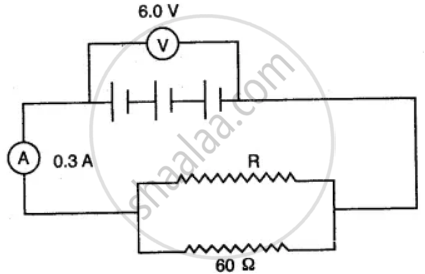Advertisements
Advertisements
Question
Show how would you join three resistors, each of resistance 9 Ω so that the equivalent resistance of the combination is
1) 13.5
2) 6 Ω
Solution
1) Case: To get equivalent resistance = 13.5 Ω
For this case, two 9 Ω resistors should be first connected in parallel and then their combination should be connected in series with the remaining 9 Ω resistor. Thus,

`R = (9xx9)/(9+9) = 81/18` = 4.5 Ω

`R_"total"` = R + 9 = 4.5 + 9 = 13.5 Ω
2) Case: To get equivalent resistance = 6 Ω
For this case, two 9 Ω resistors should be first connected in series and then this combination should be connected in parallel with the remaining 9 Ω resistor. Thus,
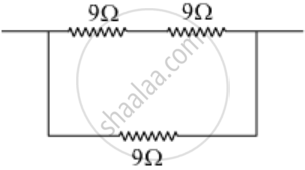
R1 = 9 + 9 = 18 Ω
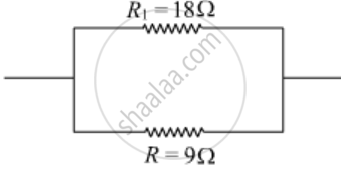
`R_"total" = (R_1xxR)/(R_1+R) = (18xx9)/(18+9)` = 6 Ω
APPEARS IN
RELATED QUESTIONS
Several electric bulbs designed to be used on a 220 V electric supply line are rated 10 W. How many lamps can be connected in parallel with each other across the two wires of 220 V line if the maximum allowable current is 5 A?
Two resistors, with resistance 5 Ω and 10 Ω respectively are to be connected to a battery of emf 6 V so as to obtain:
(i) minimum current flowing
(ii) maximum current flowing
(a) How will you connect the resistances in each case?
(b) Calculate the strength of the total current in the circuit in the two cases.
In the diagram shown below, the cell and the ammeter both have negligible resistance. The resistor are identical.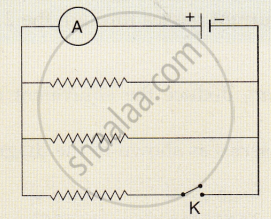
How will you connect three resistors of resistances 2 Ω, 3 Ω, and 6 Ω to obtain a total resistance of 4 Ω, and 1 Ω?
In the following figure calculate:
- the total resistance of the circuit
- the value of R, and
- the current flowing in R.
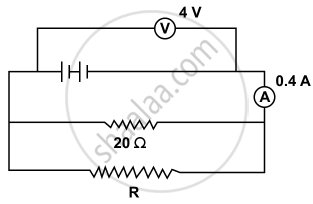
A particular resistance wire has a resistance of 3 ohm per meter. Find the total resistance of three lengths of this wire each 1.5 m long, joined in parallel.
Tick (✓) the correct choice among the following :
Consider two cases of two parallel current carrying conductors. Current in
th e same direction and currents in th e opposi te directions will produce
The equivalent resistance of a parallel combination of two resistors of 30 Ω and 60 Ω is ______________.
How does the resistance of a metallic wire depend on the thickness of wire?
In the figure below, the ammeter A reads 0.3 A. Calculate:
(i) the total resistance of the circuit
(ii) the value of R
(iii) the current flowing through R.
